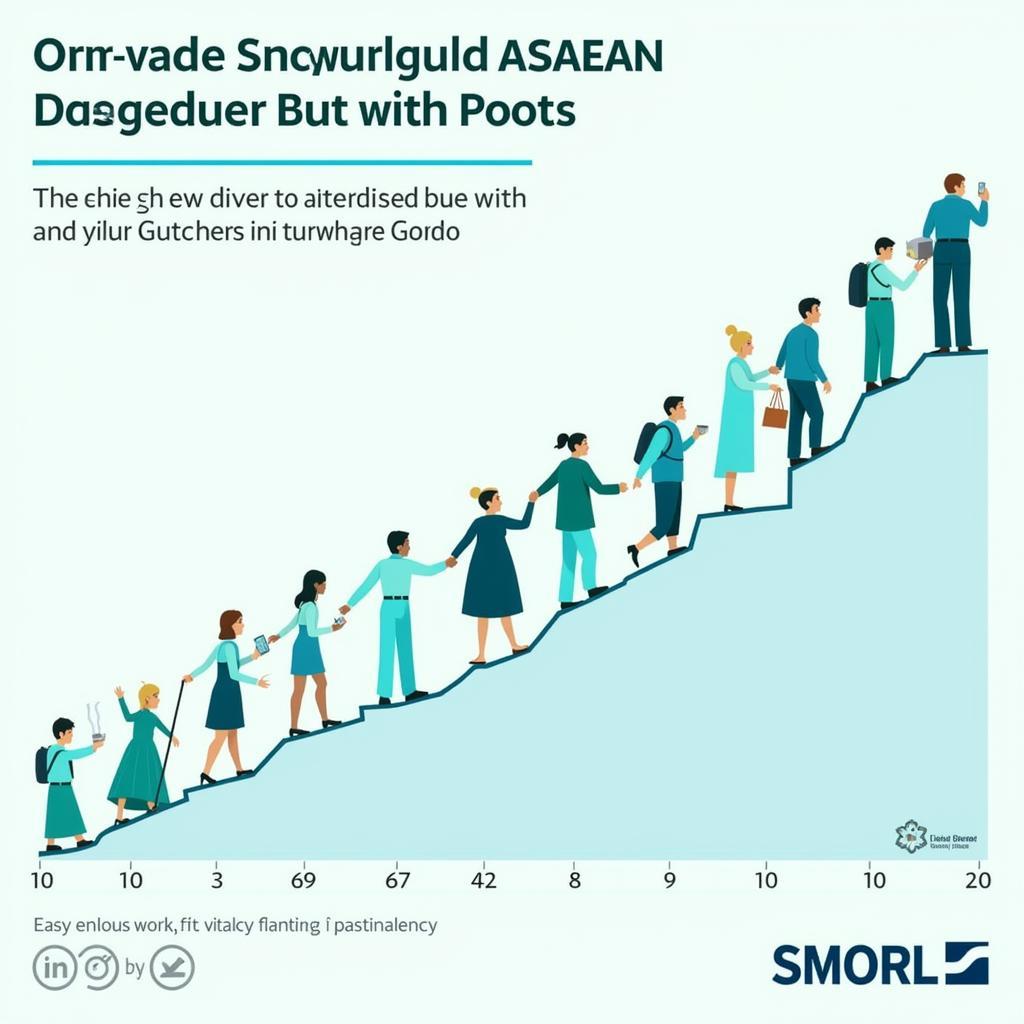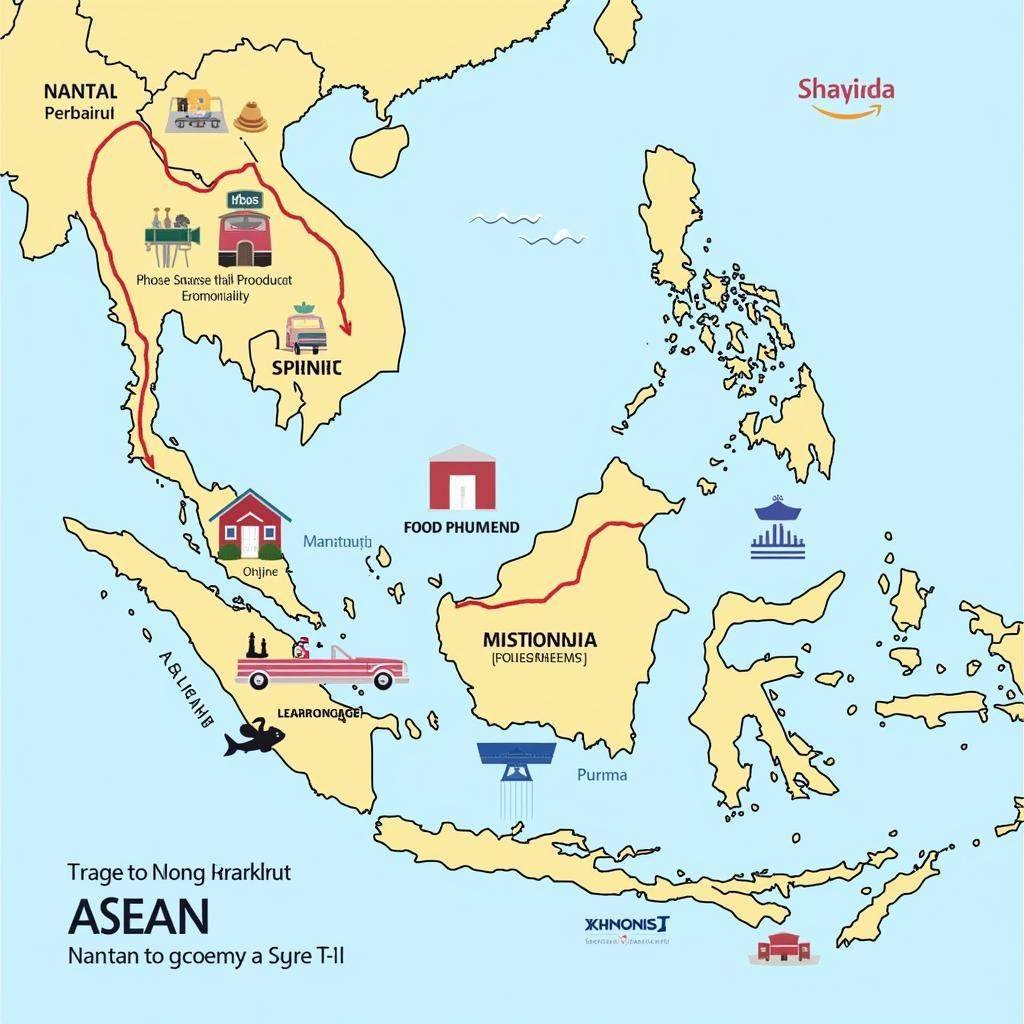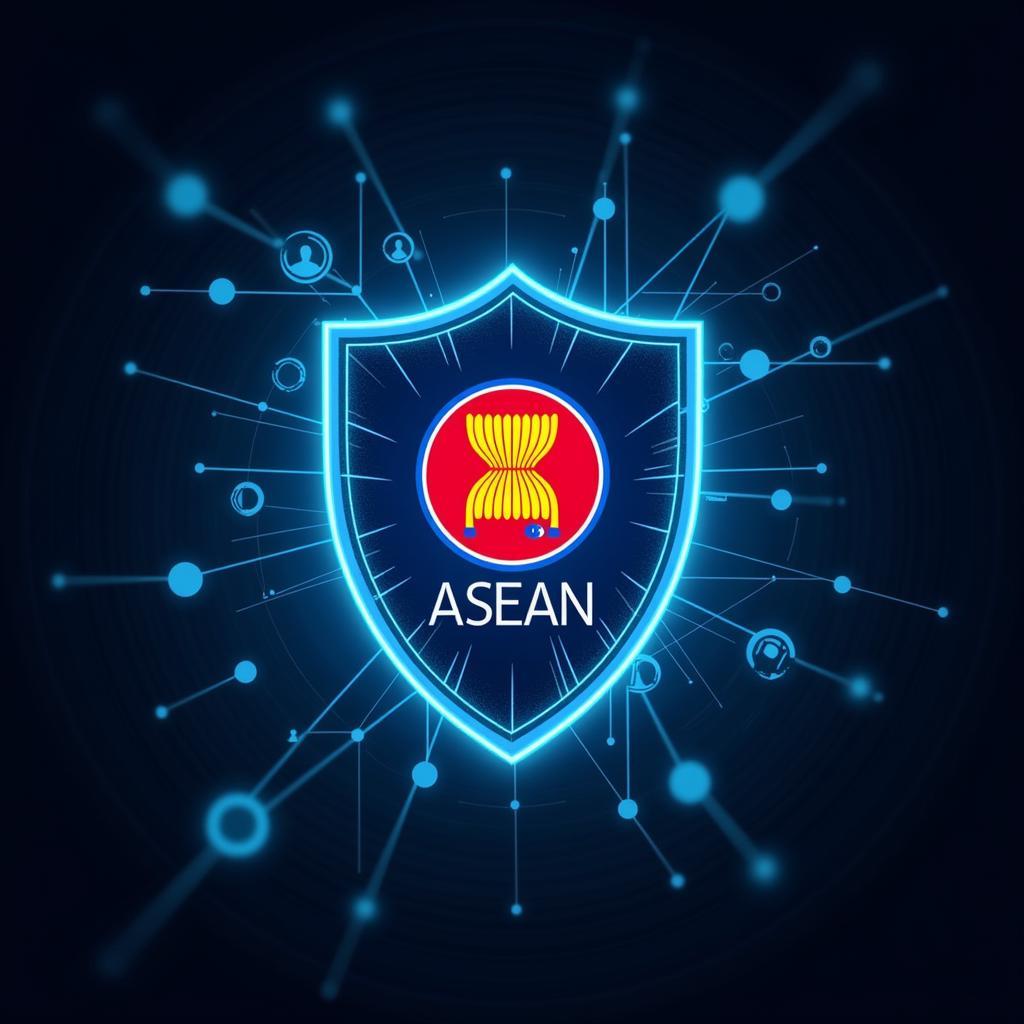Southeast Asia, home to the Association of Southeast Asian Nations (ASEAN), is a region brimming with cultural diversity, breathtaking landscapes, and a rapidly growing economy. Often hailed as the next global economic powerhouse, Asean By The Numbers paints a compelling picture of growth, opportunity, and a future filled with promise. Let’s delve into the key statistics that define ASEAN’s economic landscape and understand why the world is watching.
A Region on the Rise: Population and GDP Growth
 ASEAN Population Growth Chart
ASEAN Population Growth Chart
ASEAN, comprising 10 diverse member states, boasts a population exceeding 670 million people, making it the third most populous region globally, after China and India. This translates to a massive and increasingly affluent consumer base, attracting significant foreign investment.
The region’s economic prowess is undeniable, with a combined GDP exceeding US$3 trillion, positioning ASEAN as the fifth-largest economy globally if it were a single country. This economic dynamism is fueled by consistent GDP growth, averaging around 5% in recent years, outpacing global averages and cementing ASEAN’s status as a key driver of the global economy.
ASEAN’s Economic Pillars: Unveiling the Key Sectors
 ASEAN Key Economic Sectors
ASEAN Key Economic Sectors
ASEAN’s economic landscape is characterized by a diverse range of sectors, each playing a pivotal role in its growth story. Here’s a closer look at some of the key pillars:
- Manufacturing: ASEAN has established itself as a global manufacturing hub, particularly in electronics, textiles, and automotive production. This sector benefits from competitive labor costs, a strategic location, and favorable trade agreements.
- Tourism: From pristine beaches and lush rainforests to vibrant cities and ancient temples, ASEAN is a tourism magnet. This sector contributes significantly to GDP and employment, attracting millions of visitors annually.
- Agriculture: Rice, palm oil, rubber – ASEAN is a major agricultural producer and exporter. This sector provides livelihoods for a significant portion of the population, particularly in rural areas.
- Digital Economy: The rise of e-commerce, fintech, and digital services is transforming ASEAN’s economic landscape, attracting tech giants and nurturing a thriving startup ecosystem.
Intra-ASEAN Trade and Investment: Strengthening Regional Ties
ASEAN’s commitment to regional integration is evident in its efforts to bolster intra-ASEAN trade and investment. The ASEAN Economic Community (AEC) blueprint envisions a single market and production base, facilitating the free flow of goods, services, investment, and skilled labor within the region.
Several initiatives, including the ASEAN Free Trade Area (AFTA), have been instrumental in reducing trade barriers and promoting economic cooperation.
For a deeper understanding of the agreements shaping ASEAN’s trade landscape, explore our resources on apa itu FTA asean china.
ASEAN’s Global Outlook: Navigating Challenges and Opportunities
While ASEAN’s economic outlook remains positive, the region faces challenges such as income inequality, infrastructure gaps, and geopolitical complexities. However, ASEAN has consistently demonstrated resilience and a collaborative spirit in addressing these issues.
The region’s commitment to innovation, digital transformation, and sustainable development positions it well to navigate these challenges and capitalize on emerging opportunities. Furthermore, ASEAN’s strategic partnerships with major economies like China, Japan, and the United States underscore its growing global influence.
Conclusion: ASEAN’s Ascent to Global Prominence
ASEAN by the numbers tells a story of remarkable growth, resilience, and a bright future. From its vibrant economy and youthful population to its strategic location and commitment to regional integration, ASEAN is poised to become a driving force in the global economy. As the region continues to embrace innovation, foster inclusivity, and strengthen its global partnerships, ASEAN’s ascent to global prominence is certain to continue, capturing the attention and imagination of the world.
FAQs about ASEAN’s Economy:
- What is the role of the ASEAN Secretariat? The ASEAN Secretariat, based in Jakarta, Indonesia, supports ASEAN’s work by coordinating meetings, facilitating cooperation among member states, and implementing regional initiatives.
- What are the key challenges facing ASEAN’s economic growth? Some of the key challenges include infrastructure gaps, income inequality, geopolitical tensions, and the need to further enhance regional integration.
- How is ASEAN addressing climate change? ASEAN has adopted several regional plans and initiatives focused on climate change mitigation and adaptation, promoting renewable energy, and enhancing environmental sustainability.
Need further information on ASEAN?
Explore more insights on our website, including detailed analyses on topics such as:
- ASE A5 PDF: Discover the specifics of the ASEAN A5 agreement and its implications for trade and investment.
- All ASES Surverys: Gain valuable insights into the economic, social, and political landscapes of ASEAN member states through our comprehensive surveys.
For any inquiries or assistance regarding ASEAN, feel free to contact us:
Phone: +84 369 020 373
Email: [email protected]
Address: Thon Ngoc Lien, Hiep Hoa, Bac Giang, Vietnam
Our dedicated team is available 24/7 to assist you!

